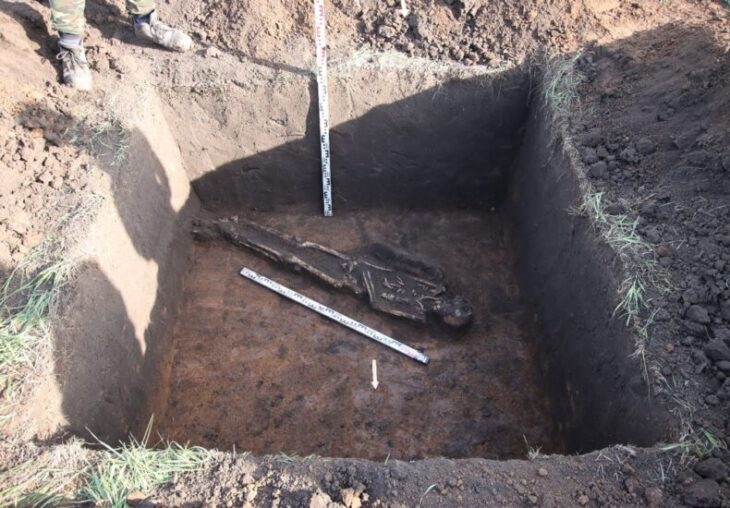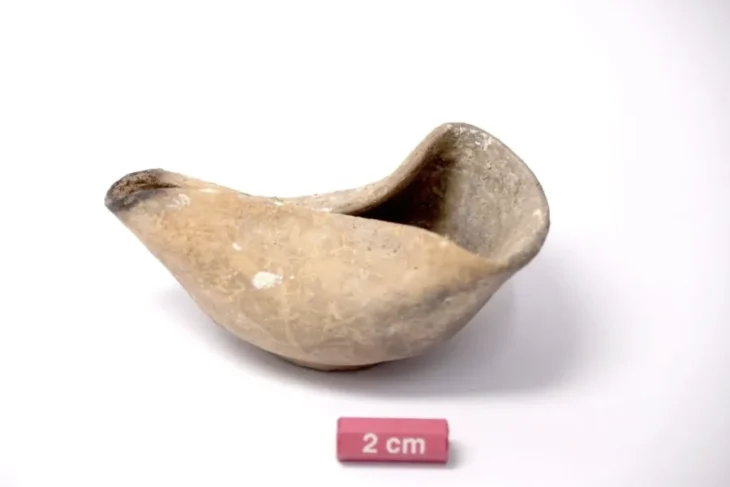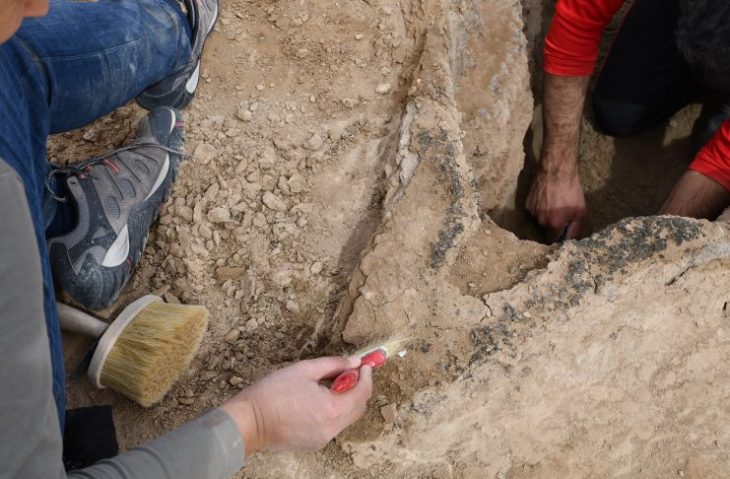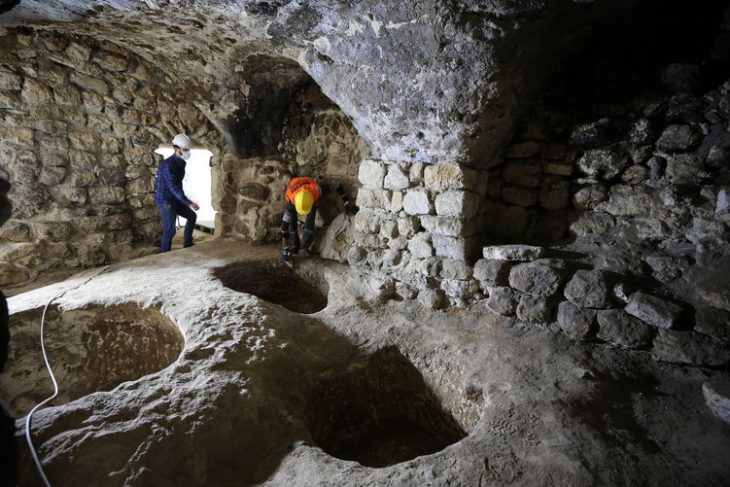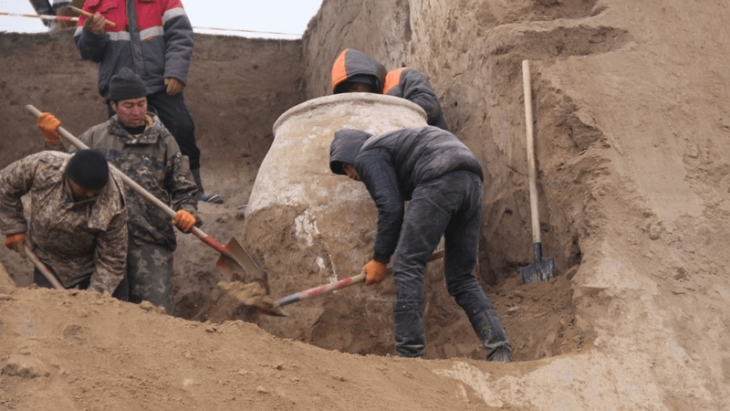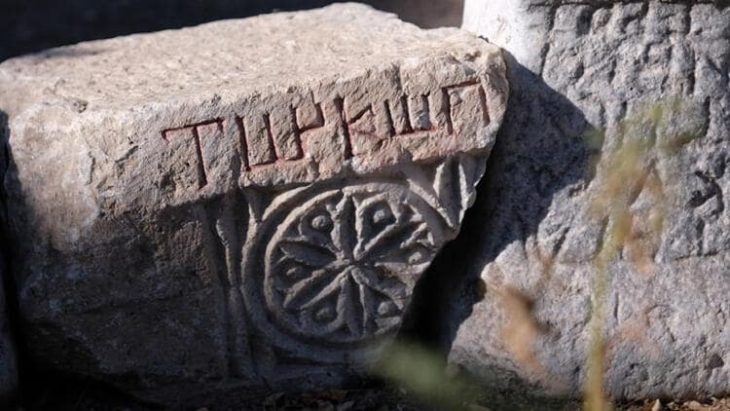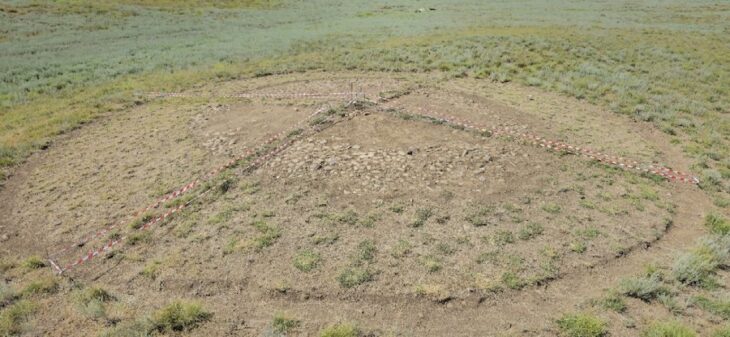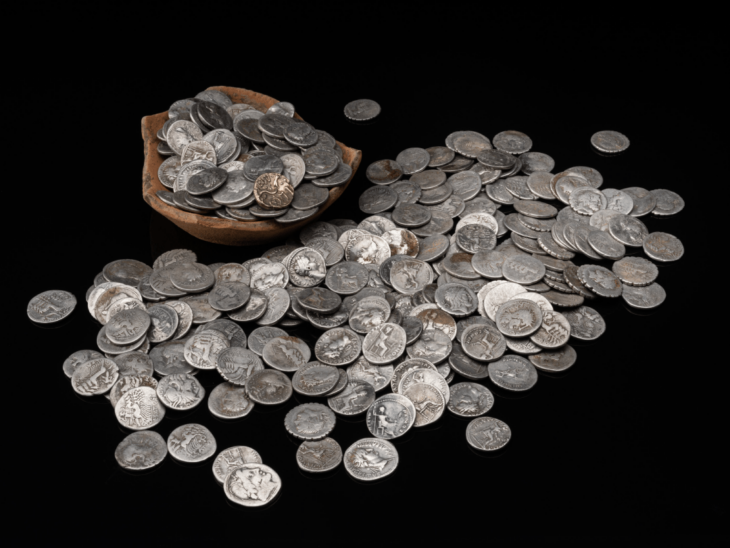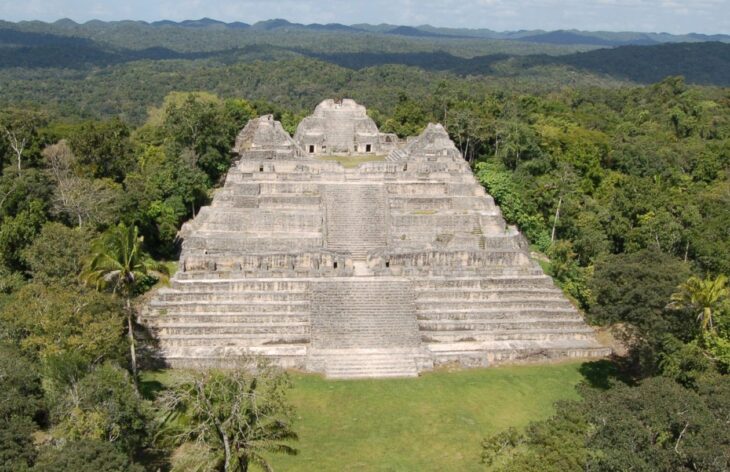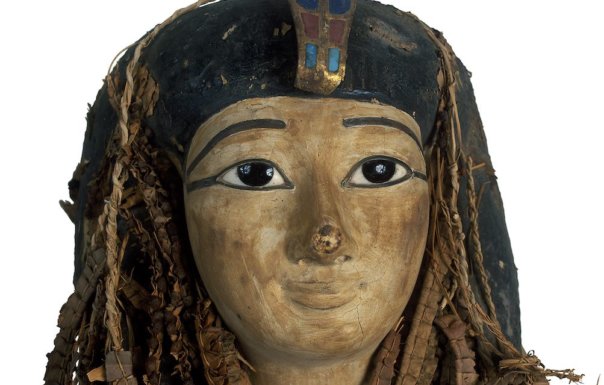A remarkable discovery has emerged from the heart of Etruria: an intact Etruscan rock-cut tomb, sealed for over 2,700 years, has been unearthed in the San Giuliano necropolis, near the town of Barbarano Romano in central Italy’s Viterbo province. Dated to the end of the 7th century B.C., this burial chamber is from the final phase of the Orientalizing period, a critical era in Etruscan cultural development.
The tomb, untouched by grave robbers and preserved in its original state, offers a rare and invaluable glimpse into the funerary rituals and social customs of the early Etruscans. Upon removal of the heavy stone slab sealing the chamber, archaeologists discovered dozens of ceramic vessels, most of which were painted in the distinctive Etruscan-geometric style. Some of the ceramics appear to have been placed in ritual positions, reinforcing the theory of a structured burial ceremony before the final sealing of the tomb.
Among the most striking finds are bronze ornaments and a ritual basin positioned near one of the burial beds. All items are currently being documented in situ to preserve their original arrangement, which may hold vital clues about the identity and social status of the deceased.
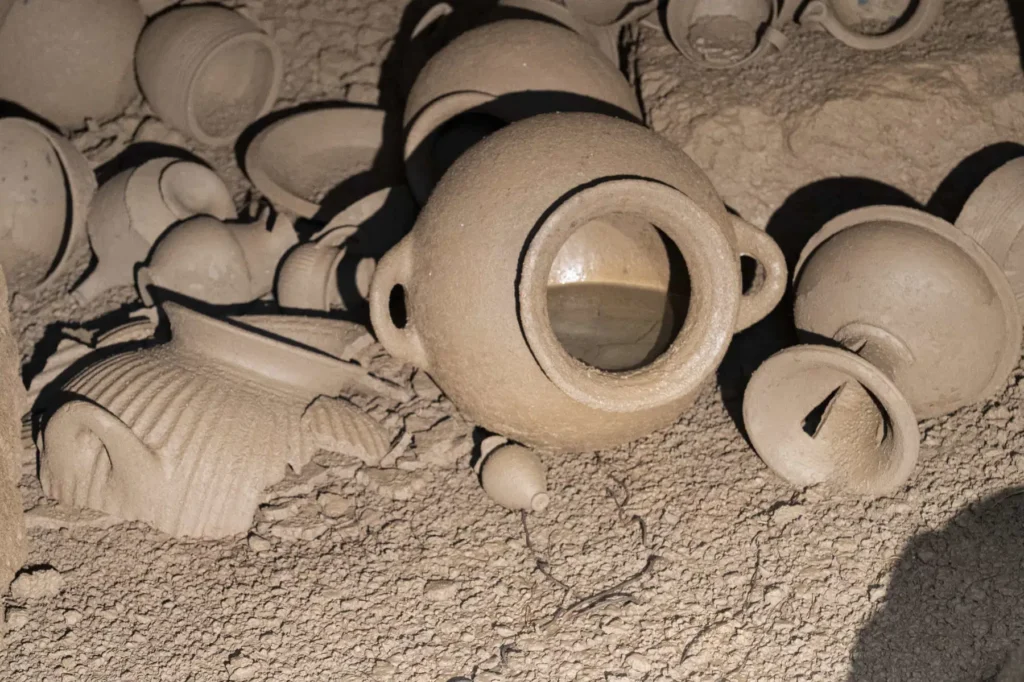
A Unique Glimpse Into Etruscan Burial Practices
“This is an incredibly rare find,” said Dr. Barbara Barbaro, a senior official from the Italian Superintendency of Archaeology. “Most of the over 500 tombs in the San Giuliano necropolis were looted in ancient or modern times. To discover a sealed, intact tomb is exceptional. It allows us to study Etruscan life and death in a complete and undisturbed context.”
The San Giuliano necropolis, named after the hill on which it lies, was in use between the 7th and 3rd centuries B.C. and is considered one of the most complex and richly layered examples of Etruscan funerary architecture. Besides the newly discovered tomb, the site includes several notable burial monuments, such as:
📣 Our WhatsApp channel is now LIVE! Stay up-to-date with the latest news and updates, just click here to follow us on WhatsApp and never miss a thing!!
The Tomb of the Queen – a massive 10-meter-high funerary complex with dual entrances and mock Doric doors
The Tomb of the Deer – named for the engraving of a deer along its staircase
The Tomb of the Beds – featuring four stone burial beds likely intended for a family group
The Tomb of the Salamander – recently restored and known for yielding a red carnelian scarab engraved with a warrior on horseback, dated to the 4th century B.C.
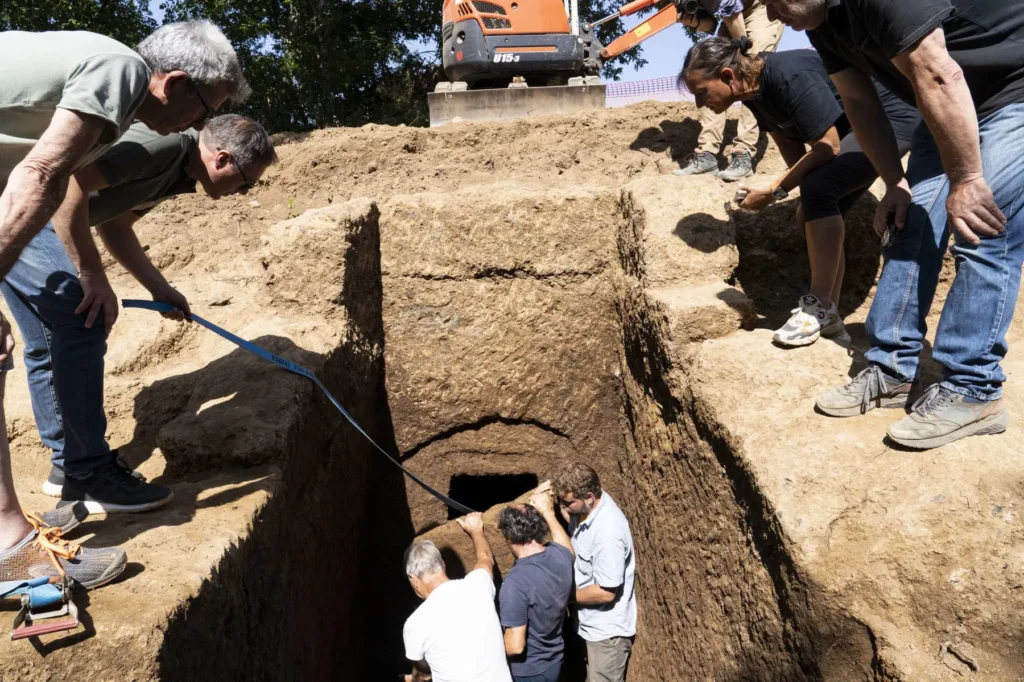
International Collaboration Fuels Discovery
The excavation is part of a multi-year research and conservation initiative led by Baylor University in Texas, under the direction of Dr. Davide Zori. The project is funded by Italy’s Ministry of Culture and enjoys the collaboration of local institutions including the Municipality of Barbarano Romano, the Marturanum Regional Park, and Italy’s Cultural Heritage Protection Police.
According to Dr. Zori, this joint international effort demonstrates the value of shared expertise and cross-border academic partnerships. “This tomb offers an unparalleled opportunity to learn more about Etruscan society, from their craftsmanship to their religious beliefs. Every artifact contributes to a bigger picture.”
More Than a Discovery: A Cultural Moment
Dr. Barbaro emphasized the emotional impact of such a rare find: “The moment the tomb was opened was filled with silence, awe, and deep respect. It was as if we had opened a door to the distant past. This kind of discovery doesn’t just enrich the academic community—it becomes a collective cultural event.”
She added, “We’ve preserved a part of our heritage that could have been lost to looters. Now, it will help tell a story that belongs to all of us.”
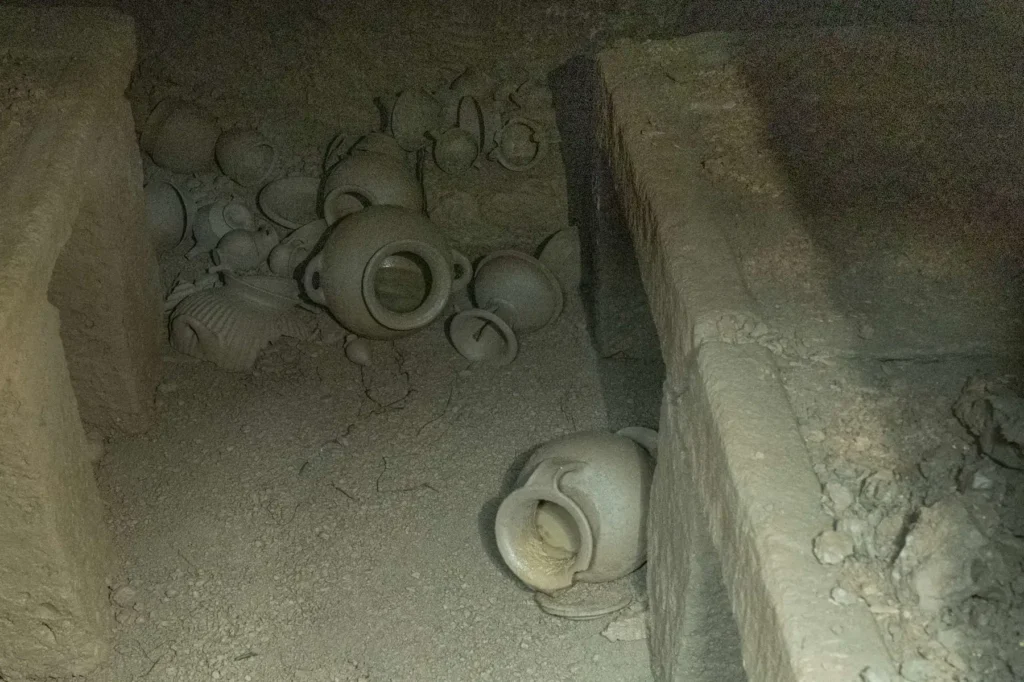
As documentation and stratigraphic excavation continue in the coming weeks, scholars anticipate that further analysis will reveal details about the individual buried, including their age, gender, status, and possibly their role in Etruscan society. The findings are expected to significantly contribute to the broader understanding of Etruscan history and Mediterranean cultural exchanges during the Orientalizing period.
Cover Image Credit: Soprintendenza Speciale Archeologia Belle Arti e Paesaggio di Roma Piazza dei Cinquecento


